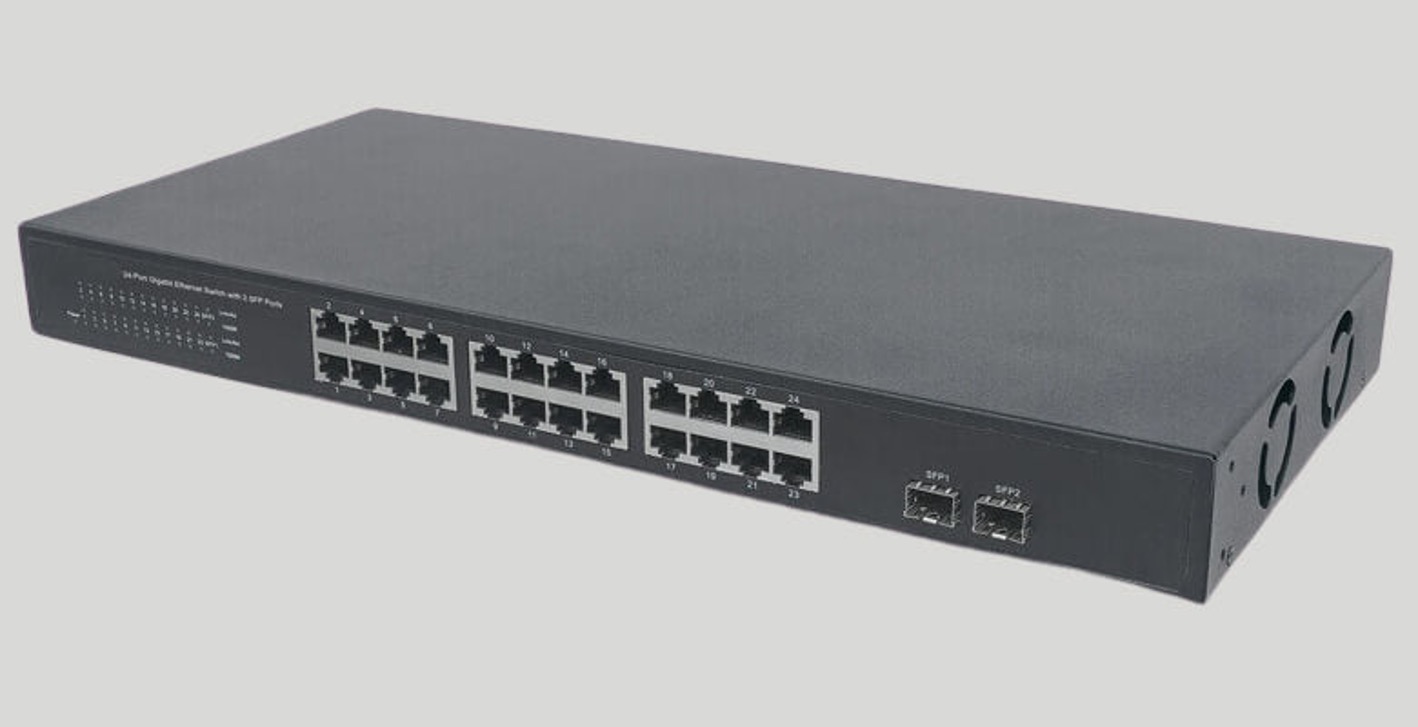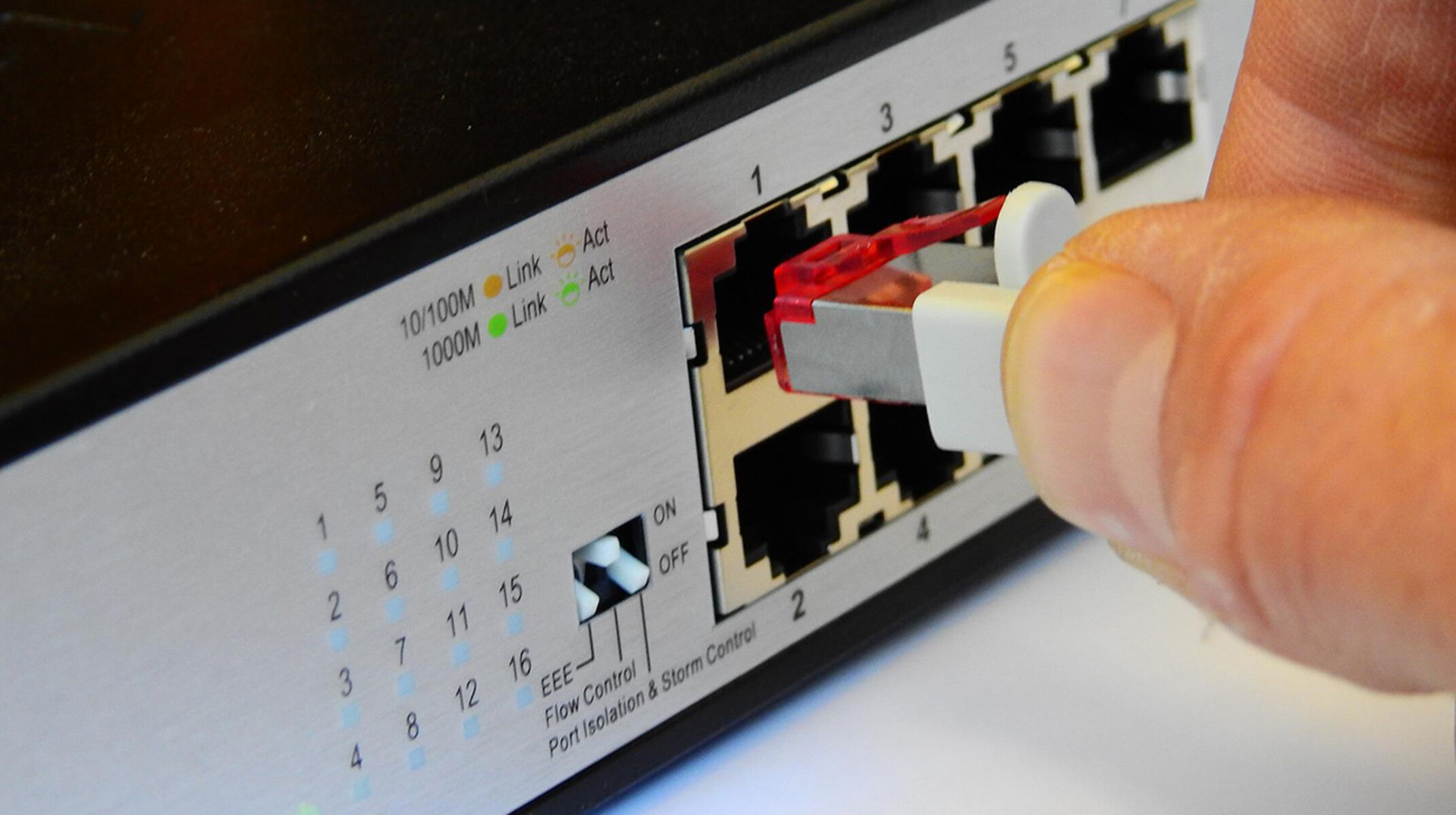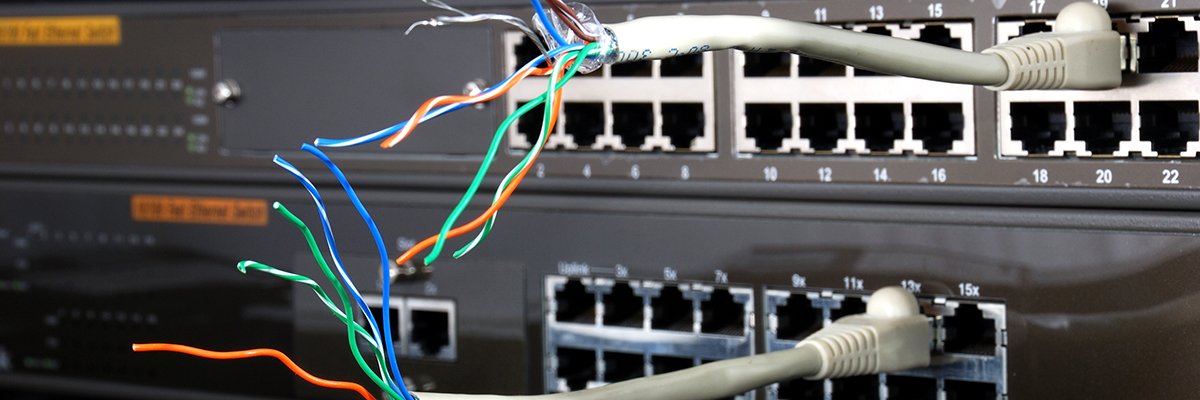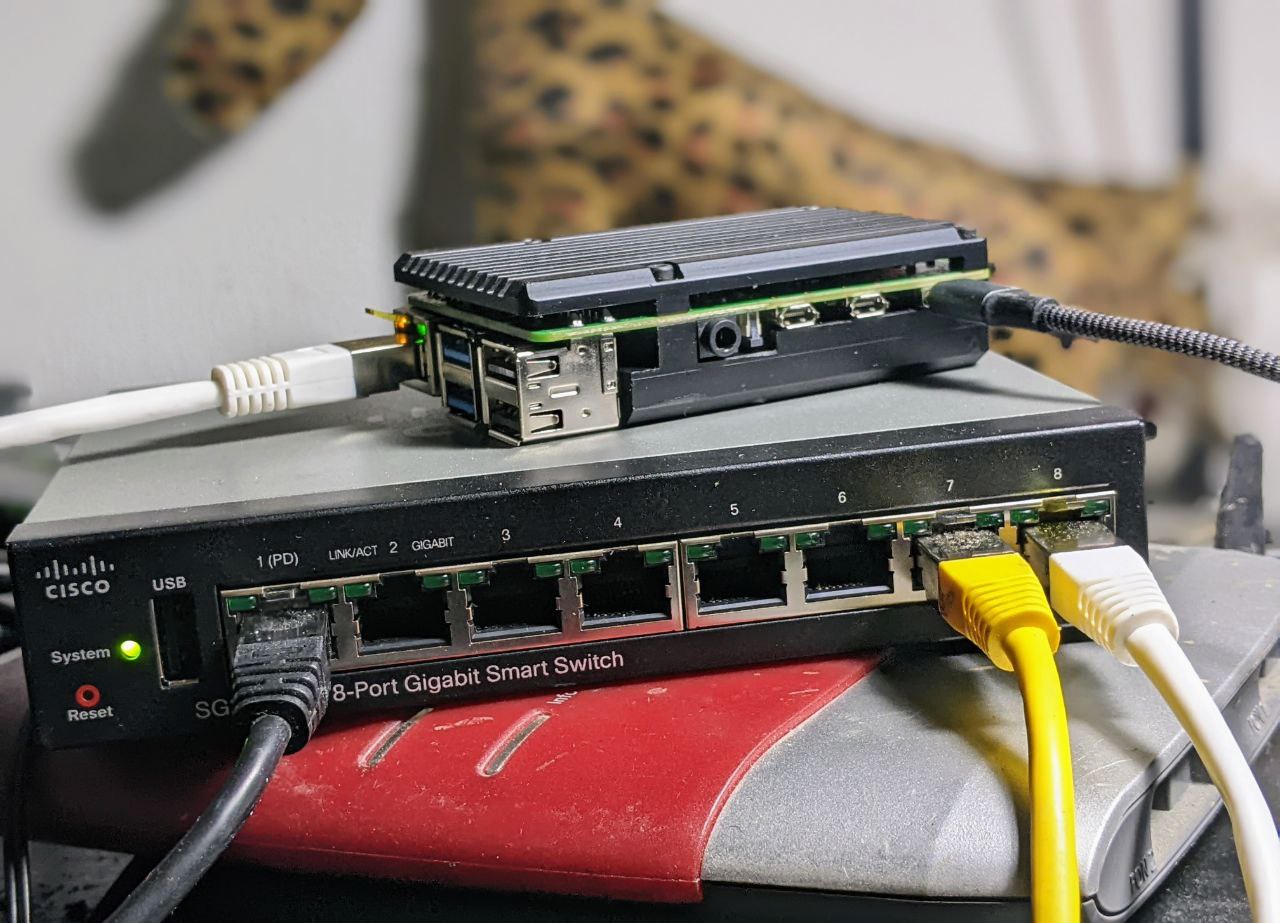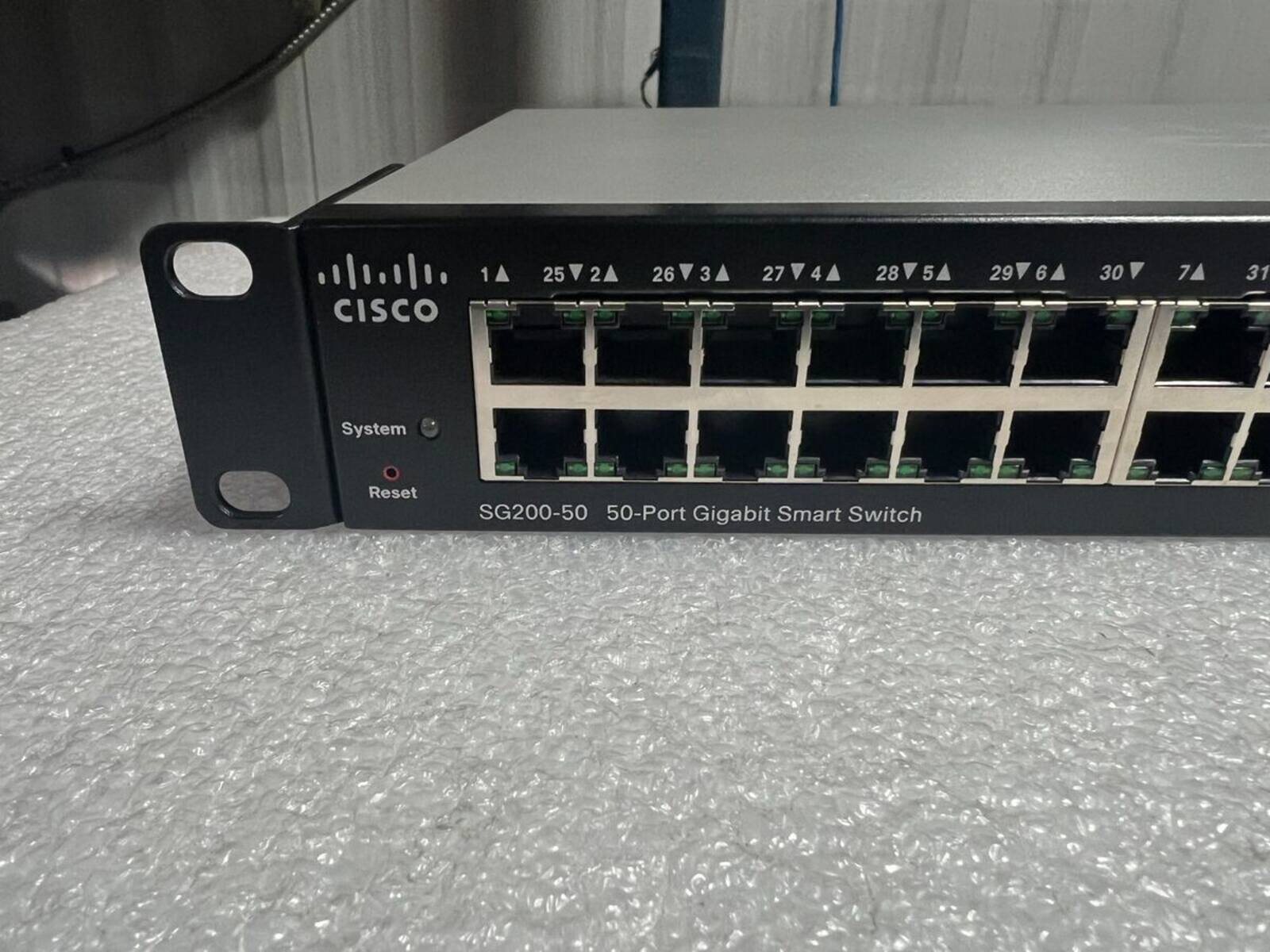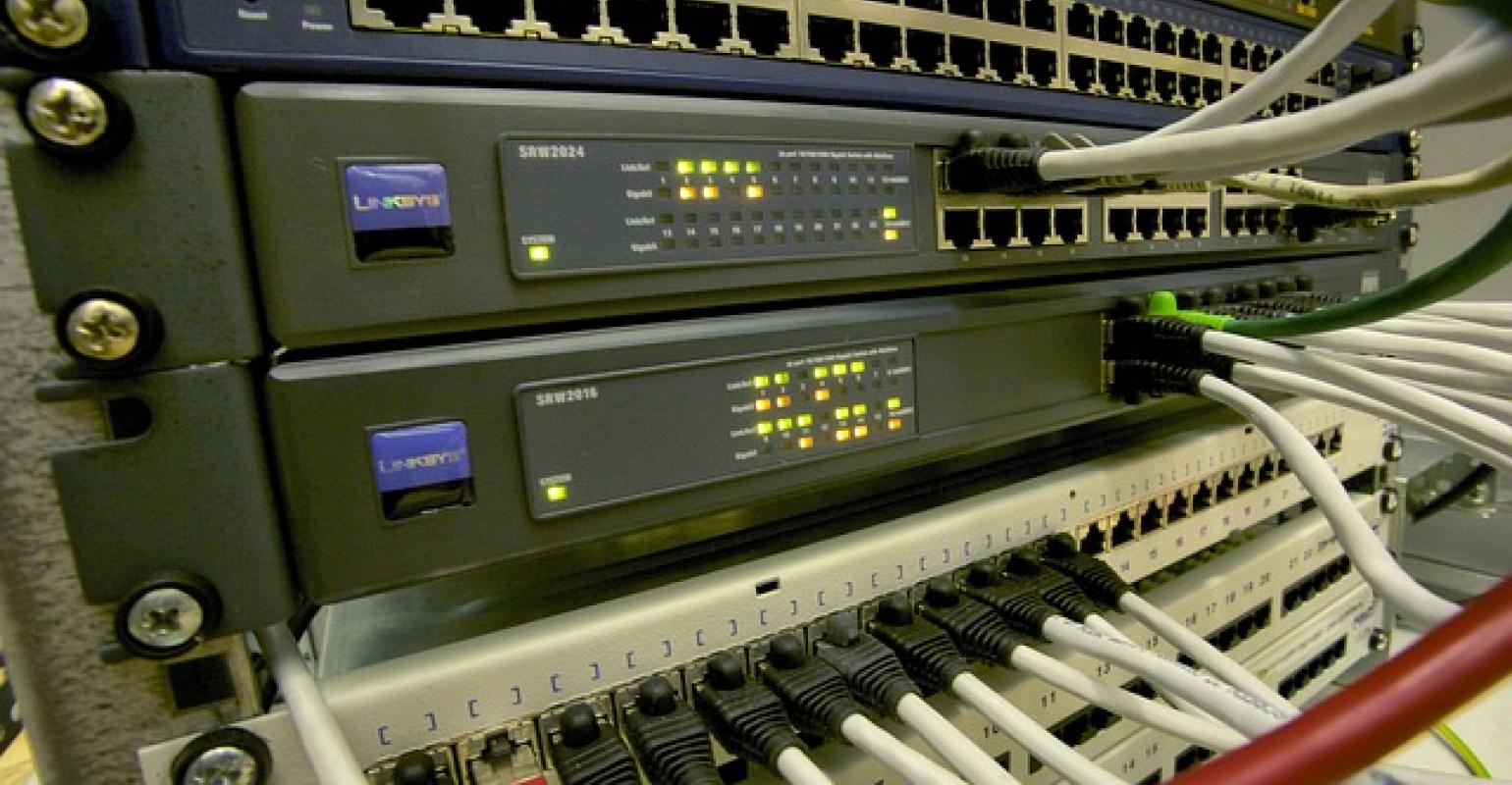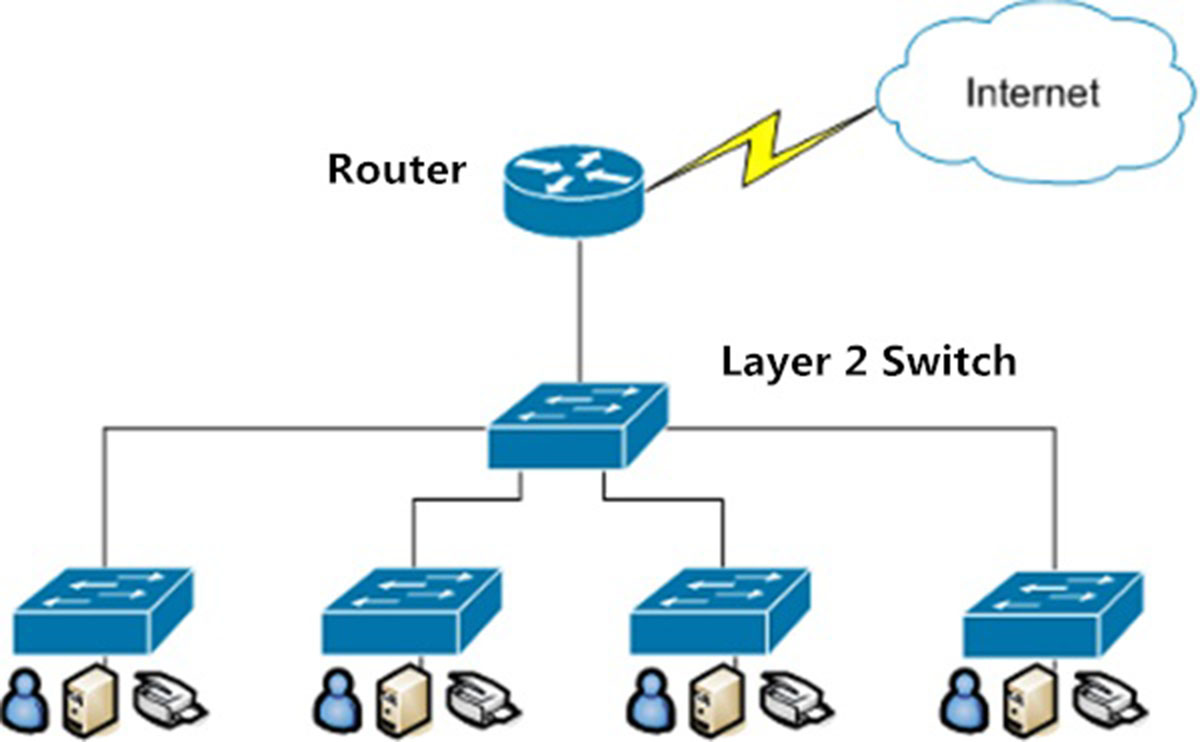Introduction
Welcome to the world of networking, where the seamless flow of data is essential for businesses and individuals alike. In this digital era, the demand for efficient and reliable network infrastructure has never been greater. At the heart of this infrastructure lies a fundamental component known as a network switch. Whether you're a tech enthusiast, a business owner, or simply curious about the inner workings of the internet, understanding the role of a network switch is crucial.
Network switches are the unsung heroes of modern connectivity, facilitating the smooth transmission of data between devices within a network. From small home setups to large enterprise environments, these devices play a pivotal role in ensuring that information reaches its intended destination swiftly and securely. To comprehend the significance of network switches, it's essential to explore their functionality, types, benefits, and considerations for choosing the right one for your specific needs.
So, what exactly is a network switch, and how does it operate? What are the different types of network switches, and what benefits do they offer? Moreover, what factors should you consider when selecting a network switch for your home or business? By delving into these questions, we can unravel the intricacies of network switches and gain a deeper appreciation for their indispensable role in modern networking.
Join us on a journey through the realm of network switches as we decode their inner workings, explore their diverse applications, and shed light on the considerations that can help you make informed decisions. Whether you're a novice seeking to expand your tech knowledge or a seasoned professional aiming to refine your networking infrastructure, this exploration of network switches promises to be enlightening and enriching. Let's embark on this illuminating expedition into the realm of network switches and unveil the secrets behind their seamless data transmission capabilities.
What is a Network Switch?
A network switch is a crucial networking device that serves as a central connection point for various devices within a local area network (LAN). Unlike a hub, which simply broadcasts data to all connected devices, a network switch intelligently manages and directs data traffic, enhancing network efficiency and security.
At its core, a network switch operates by using the Media Access Control (MAC) addresses of connected devices to forward data only to the intended recipients, reducing unnecessary network congestion and optimizing data transmission. This process is accomplished through the creation of a dedicated communication path between the sender and receiver, ensuring that data flows seamlessly within the network.
Network switches come in various sizes and configurations to accommodate the specific needs of different environments, ranging from small home networks to expansive enterprise setups. They may feature a varying number of ports, enabling connections for multiple devices such as computers, printers, servers, and other networking equipment.
With the ability to handle data transfer at high speeds and support various network protocols, including Ethernet and Gigabit Ethernet, network switches have become essential components in modern networking infrastructures. Their versatility and adaptability make them indispensable for streamlining data flow and optimizing network performance in diverse settings.
As the backbone of efficient local area networks, network switches play a pivotal role in ensuring seamless communication and data exchange among connected devices. By understanding the fundamental purpose and functionality of network switches, individuals and businesses can harness the power of these devices to create robust and reliable network environments that meet their specific connectivity requirements.
How Does a Network Switch Work?
Network switches operate by utilizing the MAC addresses of connected devices to intelligently manage the flow of data within a local area network (LAN). When a device connected to the switch sends data, the switch examines the destination MAC address to determine the appropriate port through which to forward the data. This process, known as packet switching, enables the switch to direct data only to the intended recipient, optimizing network efficiency and reducing unnecessary data transmission.
Unlike traditional network hubs, which indiscriminately broadcast data to all connected devices, network switches create dedicated communication paths between sender and receiver, effectively minimizing network congestion and enhancing data security. By establishing these direct connections, switches facilitate faster and more efficient data transmission, making them integral to the smooth operation of modern networks.
Furthermore, network switches support full-duplex communication, allowing data to be transmitted and received simultaneously on each port. This bidirectional data flow capability significantly increases network throughput and reduces latency, resulting in a more responsive and agile network infrastructure.
Additionally, the advent of managed switches has introduced advanced features that enable network administrators to exert greater control over network traffic. These features include Quality of Service (QoS) settings, VLAN (Virtual Local Area Network) support, and port mirroring, among others. QoS settings prioritize specific types of data traffic, ensuring that critical applications receive the necessary bandwidth and network resources. VLAN support allows for the segmentation of a network into multiple virtual networks, enhancing security and efficiency. Port mirroring enables the monitoring of network traffic for troubleshooting, analysis, and security purposes.
By harnessing these sophisticated capabilities, network switches play a pivotal role in optimizing data flow, enhancing network security, and facilitating the seamless exchange of information within local area networks. Their ability to intelligently manage data traffic and support advanced networking features makes them indispensable components in modern networking infrastructures.
Types of Network Switches
Network switches are available in various types, each designed to cater to specific networking requirements and environments. Understanding the distinctions between these types is essential for selecting the most suitable switch for a particular application. The primary types of network switches include:
- Unmanaged Switches: These switches are plug-and-play devices that operate without the need for configuration. They are ideal for small networks and home use, offering basic connectivity without the complexity of managed switches.
- Managed Switches: Managed switches provide advanced features and configuration options, allowing network administrators to exert greater control over network traffic. They offer enhanced security, Quality of Service (QoS) settings, VLAN support, and other advanced functionalities.
- Layer 2 Switches: These switches operate at the data link layer (Layer 2) of the OSI model and are capable of forwarding traffic based on MAC addresses. They are commonly used for local area networks and provide efficient data transmission within a single network segment.
- Layer 3 Switches: Layer 3 switches, also known as multilayer switches, combine the capabilities of traditional switches with routing functionalities. They can make forwarding decisions based on IP addresses, enabling them to route traffic between different subnets or VLANs.
- Stackable Switches: Stackable switches can be interconnected to form a single, unified switch with higher port density and improved resiliency. They are commonly used to expand network capacity and provide redundancy.
- PoE Switches: Power over Ethernet (PoE) switches deliver both data and electrical power to PoE-enabled devices such as IP cameras, wireless access points, and VoIP phones over a single Ethernet cable, simplifying deployment and reducing the need for separate power sources.
Each type of network switch offers distinct advantages and functionalities, catering to diverse networking requirements and operational needs. By evaluating the specific features and capabilities of these switches, organizations and individuals can make informed decisions when selecting the most suitable switch for their networking infrastructure.
Benefits of Using a Network Switch
Utilizing network switches in a local area network (LAN) environment offers a multitude of benefits that significantly enhance network performance, security, and manageability. Some of the key advantages of using network switches include:
- Enhanced Data Transmission: Network switches facilitate efficient and high-speed data transmission by creating dedicated communication paths between devices. This optimized data flow minimizes network congestion and latency, resulting in faster and more reliable data transfer.
- Improved Network Security: Unlike traditional hubs, which broadcast data to all connected devices, network switches intelligently direct data only to the intended recipients. This targeted approach enhances network security by reducing the risk of unauthorized access and eavesdropping on data transmissions.
- Scalability and Flexibility: Network switches offer scalability, allowing for the expansion of network infrastructure by adding more devices and connecting additional switches. This flexibility enables networks to accommodate growing demands and adapt to evolving connectivity requirements.
- Optimized Network Performance: With advanced features such as Quality of Service (QoS) settings and VLAN support, network switches enable the prioritization of critical data traffic and the segmentation of networks for improved performance and resource allocation.
- Centralized Management: Managed switches provide network administrators with centralized control and configuration options, allowing for the implementation of security policies, traffic monitoring, and the customization of network settings to meet specific operational needs.
- Support for Power over Ethernet (PoE): PoE switches simplify the deployment of network-connected devices by delivering both data and power over a single Ethernet cable, eliminating the need for separate power sources and facilitating the installation of devices in locations where power outlets are scarce.
By harnessing these benefits, network switches play a pivotal role in creating robust, efficient, and secure network infrastructures. Whether in home environments, small businesses, or large enterprises, the utilization of network switches contributes to the seamless flow of data, enhanced network performance, and a more resilient and manageable networking environment.
Considerations When Choosing a Network Switch
When selecting a network switch for a specific networking environment, several key considerations should be taken into account to ensure that the chosen switch aligns with the operational requirements and future scalability of the network. These considerations include:
- Port Count and Speed: Assess the number of devices that need to be connected to the switch and the required data transfer speeds. Choose a switch with an adequate number of ports and support for Gigabit Ethernet or higher speeds to accommodate current and future connectivity needs.
- Managed vs. Unmanaged: Determine whether the network requires the advanced features and configuration options offered by managed switches or if the simplicity and cost-effectiveness of unmanaged switches suffice for the intended use.
- Layer 2 vs. Layer 3 Functionality: Evaluate whether the network demands the routing capabilities and inter-VLAN communication provided by Layer 3 switches or if the data link layer switching of Layer 2 switches is sufficient for the network’s requirements.
- Power over Ethernet (PoE) Support: If the network includes PoE-enabled devices such as IP cameras, wireless access points, or VoIP phones, consider a PoE switch to simplify deployment and reduce the need for separate power sources.
- Scalability and Redundancy: Anticipate the future growth of the network and consider stackable switches or switches with high port density to accommodate expansion. Redundant power supply options can also enhance network resilience.
- Quality of Service (QoS) Requirements: If the network involves real-time applications or requires the prioritization of specific types of data traffic, seek switches with robust QoS capabilities to ensure optimal performance for critical applications.
- Budget and Total Cost of Ownership: Balance the initial purchase cost with the long-term operational expenses, considering factors such as power efficiency, maintenance requirements, and the potential for future upgrades.
By carefully evaluating these considerations and aligning them with the specific needs and growth projections of the network, individuals and organizations can make informed decisions when choosing a network switch. This thoughtful selection process ensures that the chosen switch not only meets current requirements but also provides the scalability and capabilities necessary to support the network’s future expansion and evolving connectivity needs.
Conclusion
Network switches stand as the cornerstone of modern networking, facilitating the seamless exchange of data within local area networks while offering a myriad of benefits and functionalities. From enhancing network security and performance to providing scalability and centralized management, the significance of network switches in enabling efficient and reliable data transmission cannot be overstated.
By understanding the diverse types of network switches available, individuals and organizations can select the most suitable switch to meet their specific networking requirements. Whether it’s the simplicity of unmanaged switches for small-scale setups or the advanced features of managed switches for enterprise environments, the versatility of network switches ensures that a tailored solution is available for every networking need.
Moreover, the considerations involved in choosing a network switch play a crucial role in ensuring that the selected switch aligns with the present and future demands of the network. From port count and speed to support for Power over Ethernet (PoE) and Quality of Service (QoS) requirements, a thoughtful evaluation of these factors empowers decision-makers to make informed choices that optimize network performance and scalability.
As technology continues to advance and networking requirements evolve, the role of network switches remains indispensable in creating resilient, agile, and secure network infrastructures. Whether in homes, businesses, or data centers, the impact of network switches reverberates through the seamless flow of data, enabling the interconnectedness that defines our digital world.
In essence, network switches embody the convergence of innovation, efficiency, and connectivity, serving as the unseen architects of our interconnected world. Their silent yet profound impact on network operations and data transmission underscores their enduring significance in the realm of modern networking.







